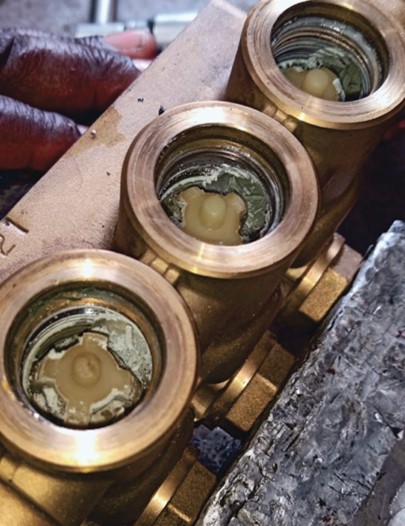
Hawk Pumps, manufacturers and distributors of a range of quality high-pressure pumps, share a few tips about cavitation in piston pumps.
Be sure to look out next week for the detailed Cavitation case study done on Piston Pumps.
Cavitation in Piston Pumps
“Most people, when asked what cavitation is, will answer “air bubbles in the inlet water of the pump”. This is only partly true. Removing any possibility of pipe leaks is important, but this is actually the least common cause of cavitation.
“As the pump piston moves backwards to suck water into the pump, it creates a partial vacuum. If the inlet feed water pipe is too small or too long, or has too many elbows and tees in it, this partial vacuum becomes too great and the water evaporates, forming bubbles of water vapour (not air bubbles). These bubbles explode with force. And when the piston changes direction to pressurise the water, they implode. This damages conrods, valves and seals. So, why does this happen?
The simple explanation is:
“Water on earth remains in place because the weight of air above it causes one bar pressure on the water surface at sea level.
“Take a glass pipe of 20m in length with a piston and a rod fitted to enable you to pull the piston to the top of the pipe. Hang it over a 20m high jetty with the bottom end in the sea. When the rod is pulled up, water enters the bottom of the pipe and rises with the piston. However, when it reaches the 10m mark, the water will not rise any further, but appears to “boil”, forming bubbles of water vapour (not air bubbles). That, in essence, is cavitation.
“At the 10m mark, the pressure in the pipe is minus one bar, you have just reached the point where the weight of the air has been equalled.
“When the original explorers of Mount Everest tried to boil meat in water when halfway up the mountain, they discovered that the pot started to boil at 50°C (there is very little air at these elevations) leaving the food uncooked. To overcome this problem, the pressure cooker was invented.
“At normal atmospheric temperatures, piston pumps should not cause any issues as long as there are no restrictions in the inlet plumbing. But when the water gets hot, it “boils” easier, as the vacuum caused by the pistons forms.
“A typical error is when a “hot water” piston pump is used to suck the 70°C water from a restricted source. Sure, the seals are designed for this temperature, but cavitation will destroy them unless the hot water is pressure fed (over one bar) to overcome the vaporisation of the water under partial vacuum. Even cold water should be gravity fed. Another common error is when the bypass water is returned to the inlet of the pump. As the water cycles it slowly builds up heat from friction in the unloader valve. This heat is cumulative.
“A problem in hard water areas, especially when the water source is a borehole, is that when the water vapour bubbles form, calcium will deposit in the pump (like the fur in a kettle) to such an extent that the valves will cease to work, and in extreme cases, will break conrods. A water softener added to the feed can help to stop this from happening.”

